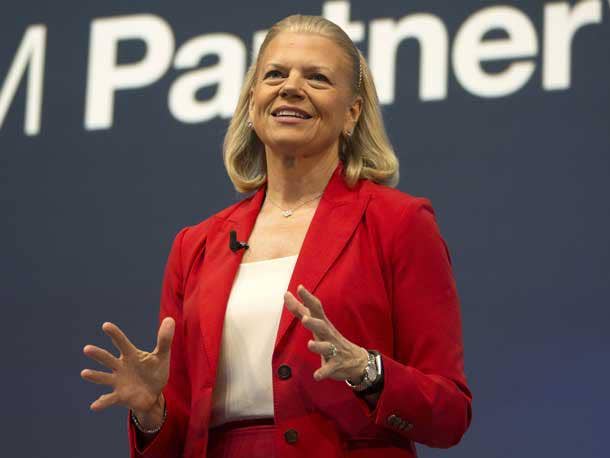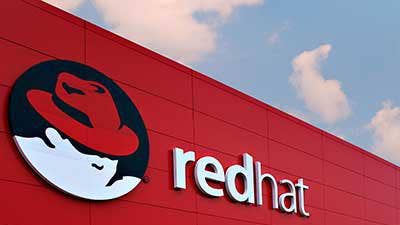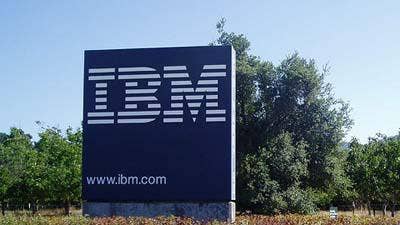Ginni Rometty: 5 Reasons Why IBM Is Acquiring Red Hat
‘This is about resetting the cloud landscape and we will be the undisputed, number one leader in hybrid cloud,’ said IBM CEO Ginni Rometty on Monday.

'We Have Been Shaping IBM For This Moment'
In arguably the biggest technology acquisition of 2018, IBM unveiled plans on Sunday to acquire open source giant Red Hat for a whopping $34 billion.
"This is the right time and we have been shaping IBM for this moment," said IBM CEO Ginni Rometty during a conference call with analysts and investors on Monday. "This is clearly IBM's most significant step in the transformation of our offerings and services to lead in high value. The combination of IBM and Red Hat, it's a game-changer."
IBM will acquire all issued and outstanding common shares of Red Hat for $190 per share, a significant premium above Red Hat's $116.68 per share as of Friday. Red Hat's stock has since jumped 43 percent to $167.62 per share as of Monday afternoon. Here are the five boldest statements from Rometty regarding the blockbuster acquisition expected to close during the second half of 2019.
Here’s what Rometty told investors on Monday.

Why Red Hat?
We are a long-standing champion of the Linux and open source community. That started 20 years ago, when we made a $1 billion investment, and ever since, we've had a long-standing partnership with Red Hat. We've been the pioneer with them on Linux and other platforms for the enterprise. They also bring to us eight million-plus developers, 90 percent penetration in the Fortune 500 and they are now one of the key foundation technologies of a hybrid cloud. I hear that from everyone. As our clients think about this transition to hybrid and multi-cloud, Red Hat strategic value is only increasing. By leveraging their large install base, the value proposition of its open architecture operating across multiple environments -- which we welcome -- that's why they've emerged as one of the key foundational technologies for hybrid computing as well. They offer a portfolio of open standards, including OpenShift, and have open hybrid cloud infrastructure. They use open containers, Kubernetes, cloud-native development, cloud automation – not to mention their developer ecosystem. … As we both looked at this hybrid cloud opportunity, multi-cloud world in front of us, [Red Hat CEO] Jim [Whitehurst] and I shared the same strategic vision and we have very complimentary capabilities.

Becoming The 'Undisputed' Hybrid Cloud Leader
This is about resetting the cloud landscape and we will be the undisputed, number one leader in hybrid cloud. We've been really building our business for this moment. To lead in the second chapter of cloud, it’s all going to be about hybrid cloud. Hybrid cloud is an emerging $1 trillion market. All clients today already have cloud. Look, we already have a $19 billion successful cloud business, but in chapter one of cloud, the early cloud projects … it's mostly been about productivity and some client-facing apps. As we've done surveys, clients have moved 10 [percent] to 20 percent of their workloads to their clouds. So chapter one of cloud, 20-percent is mostly cost focused. But this is an inflection point, if they're going to get past that and move the other 80 percent – which is about all their processes and data – they need what we're going to offer together. This robust, hybrid environment. This 80 percent is about unlocking business value. … This move of the 80 percent is only going to be achieved, if you can move data and applications across multiple clouds and make that portable. To lead in chapter two, you got to be hybrid, multi-cloud, open, secure end-to-end and have multi-cloud management.

'Accelerates Growth Across All Of IBM'
When I look at Red Hat, this accelerates growth across all of IBM. It's going to lift all of IBM. Let's look at our cloud revenue. Linux is the number one operating system on-premise and the destination in the cloud. This gives us a starting point. We're going to accelerate our own public and private cloud from this, not to mention what it does for analytics and data, artificial intelligence and IBM Watson. Remember, getting all that data together across all these environments in a secure way is our clients’ number one issue with data and AI. [Additionally] clients do need services and need help. Our global business services, they've built a cloud migration factory, built Cloud Garage and we have 90,000 cloud architects to accelerate this movement. We have the most SAP in our cloud and the most VMware on our cloud. … I feel like we built the foundation to be ready for this moment. This is great for our clients.

'We Are Going To Be The Leader In Open' Cloud
I'm telling you, this cloud battle is going to be open versus proprietary, and we are going to be the leader in open. Clients do not want lock-in and they are sharpening up to this right now. They're actually limiting function they use on other people's cloud saying, 'No, if that is not portable, do not touch those functions.' You're seeing that happen big time. Jim [Whitehurst] and I have been talking about how much people are paying and they're now recognizing what they're paying. When they see what they pay on some of their clouds, they're like, ‘Whoa, stop using that.' They want portable and this idea that they can extend every part of IBM. So move it across multiple cloud environments with no lock-in, that's what the two of us do together – we've both been building on that technology. … Red Hat runs on a number of clouds, but that's not native. There's a big difference to clients in what they're able to do and secure when you run native. We'll be the native guy.

No Technology Overlap; IBM On The Red Hat Stack
Will we put other pieces of IBM – such as our analytics – on the Red Hat stack? The answer is absolutely yes. That is really an important vehicle for distribution of so many things, and we'll do it appropriately. … We don’t see overlap in the product level. What makes this so valuable is the fact that we don’t have product overlap. So coming together we can offer holistic solutions. So you've heard us say products and hybrid cloud, but we are at different layers of that and therefore, when we come together we can offer the most compelling solution. It's because we have complementary [technology] in solving a problem around open, hybrid, multi-cloud – that's where the real value is.